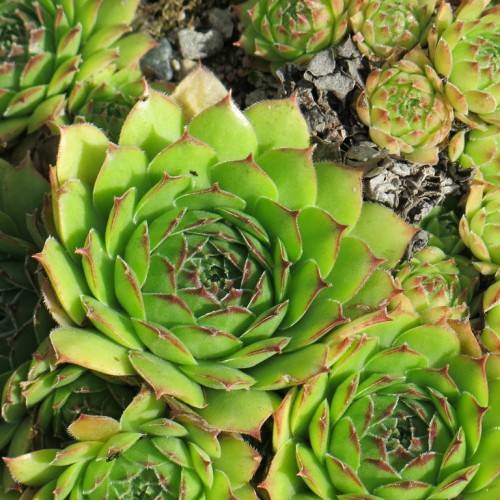
house leek
Sempervivum tectorum
Also Known As - hens and chicksCycle:
Herbaceous Perennial
Watering:
Minimum
Hardiness Zone:
3 - 8
Flowers:
Flowers
Sun:
Full sun
Soil:
Rocky , gravelly , dry
Fruits:
Fruits In Autumn Ready In Summer
Leaf:
Yes
Growth Rate:
Low
Maintenance:
Low
Drought Tolerant:
Yes
Care Level:
Medium
watering
House leeks should be watered in moderation when the soil begins to feel dry. During the growing season from mid-spring to early fall, depending on your location and climate, water deeply when the soil has become dry (usually every 10-14 days). During the winter, the house leek should be thoroughly watered less often (usually every 3-4 weeks). Be sure to check the soil first to make sure water is needed, as overwatering can cause root rot in these plants.
sunlight
House leeks need plenty of sunshine in order to stay healthy and vibrant. At least 4-6 hours of direct sunlight each day is ideal in the warmer months (April-October). During the winter season (November-March), the house leek will still require some sunshine each day, but a bit less, with 1-3 hours being recommended. In order to maximize the sunlight it receives, try to place the leek in a spot that gets the most light throughout the day. It's also important to note that house leeks should be sheltered from strong wind as this can cause the leaves to dry out.
pruning
House leeks (Sempervivum tectorum) require little pruning in order to remain healthy and attractive. Pruning should be done in early spring before the new growth begins, and only the dead, damaged, or unruly leaves and flower stalks should be removed. To prune, simply pinch or cut off the offending leaves and stalks with a sharp pair of pruning shears or scissors. Pruning must be done carefully to avoid damaging the crown of the plant. House leeks will naturally form attractive mounds of rosettes, and no further shaping is necessary.
